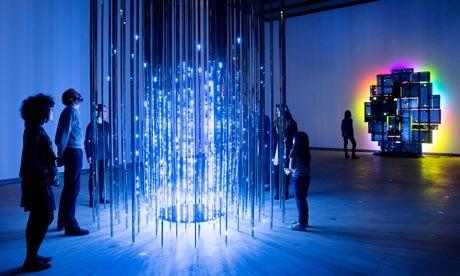-
"The most impressive request thoroughly embraced the nature of TCP/IP, and arrived in a number of packets, out of order and with some data corruption (see the missing data on the envelopes), which we had to reconstitute into the actual request within our ‘server’." Everyone involved in this post is brilliant.
-
'"Screw this,” said Horace, downing his Babycham. “I’m going skiing.”' As niche fiction goes, this is very niche, but it is quite a thing. I am not sure how many people Horace fiction is relevant for, though.
-
Newspaper Club is a great product – but I'm really glad Tom's written about the technical underpinnings of the latest version of the code, because it's super impressive. They threw out InDesign and replaced it with their own renderer, written in Cocoa; they have a gorgeous, rich Javascript client that's a joy to use; and they have a development team of 2. TWO. Brilliant work, folks.
-
"Brasfrwrw" has got to be witch-rain, right? This is great.
-
"She is omnipotent. She can conjure up an army of parkour chimney sweep ninjas! But she also has to come and go with the weather, and where there is technology, if you like, it does not always do what it should. It plays up. The umbrella handle is a bit shitty with her. The toys don't always clean themselves up at her command." I always like Schulze on Mary Poppins, and whilst it's quotable, it's probably not the most representative quote of this marvellous article. The main reason I use it is this article, more than many I've read, explains what being in a room with Jack at work is like. It's also lovely to see all the threads, some of which I saw beginning, come together. Good photos, too, of what work looks like.
-
Charming. My favourite thing about this is that it's a picture of home, and, weirdly, it arouses the same emotions in me as it would if it were a poster of a real place.
-
"Use PiP to show video from any webcam on your screen, nicely integrated as "Picture in Picture" which makes it ideal for live presentations, screencast recordings and in the educational sector." Or filming your hands…
-
"In this post, I want to pay tribute to my favorite “games” of 2012 – specific performances, instances, and events that really meant something to me. The list is admittedly idiosyncratic, subjective, and a little self-indulgent. And that’s the way it should be, I feel (um, unless you’re a journalist or something), because games, at their best, are deeply personal affairs. Games generate memories, and I want to share some of mine with you." Doug is smart.
-
"I think it’s valuable to have an understanding of assembly language. Assembly language is the lowest level of abstraction in computers – the point at which the code is still readable. Assembly language translates directly to the bytes that are executed by your computer’s processor. If you understand how it works, you’ve basically become a computer magician." I don't, and this looks like a lovely way to learn. Also: I think I finally get this. Nine-year-old me sure didn't.
-
"EasyMotion provides a much simpler way to use some motions in vim. It takes the <number> out of <number>w or <number>f{char} by highlighting all possible choices and allowing you to press one key to jump directly to the target." This is very clever.
Complexity
04 February 2013

Leo Villarreal’s Cylinder II is the opening work at the Hayward’s Light Show. It’s a very good exhibition, with a few high points; Villarreal’s piece was one of mine.
And yet.
The notes on the piece describes it as featuring “light and movement” composed by “complex computer programming.”
This particular word – complex – frequently annoys me when it comes to technologically manifested art. It annoys me because the craft of the piece is its assembly – both its manufacture, in light and metal, and its programming. But to make a virtue of its complexity… is much like describing Rembrandt as painting in “challenging oil paints”.
It’s one thing to describe the work as complex. But to describe the process the artist took as complex is something else; many artistic processes are complex, but few deserve that complexity highlighting. And in this case… the programming is intricate, and has been executed carefully, but it struck me as just another piece of electronically produced art.
Make no mistake: it’s entirely beautiful. But something about highlighting the complexity of the process when it’s fairly typical of that process rubs up against me; I wonder if it’s the surprise or alienness of technologically manifested work.
Of course, Villarreal’s piece isn’t really about how hard the programming is at all; it’s about how light interacts with a space, how patterns emerge, how we perceive. The programme notes go onto to discuss that, and they do so much better.
It’s a lovely show, though. Not much of it is bad, but the best parts – Villarreal, Eliasson, McCall, Flavin – are wonderful.
(On an entirely separate note: an exhibition in which the ability of the public to read “NO PHOTOGRAPHY” signs was worse than ever. The signs were particularly illegible in the darkened rooms, which rather spoiled my favourite piece of the exhibition – Anthony McCall’s You and I, Horizontal; an exhibit that makes a virtue of carefully shaped light through darkness is somewhat impeded by camera flashes. Leave them at home, folks; it’s art, not a sideshow.)
-
An excellent post by Priest on lists, and canons, and why you sometimes share your own. Also, strikingly, so much of this is the sf I have grown to love as an adult – the Le Guin, the Pohl, the Dick, and especially the Roberts. You make the list to stop it becoming sacred.